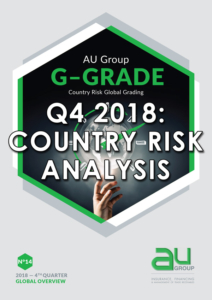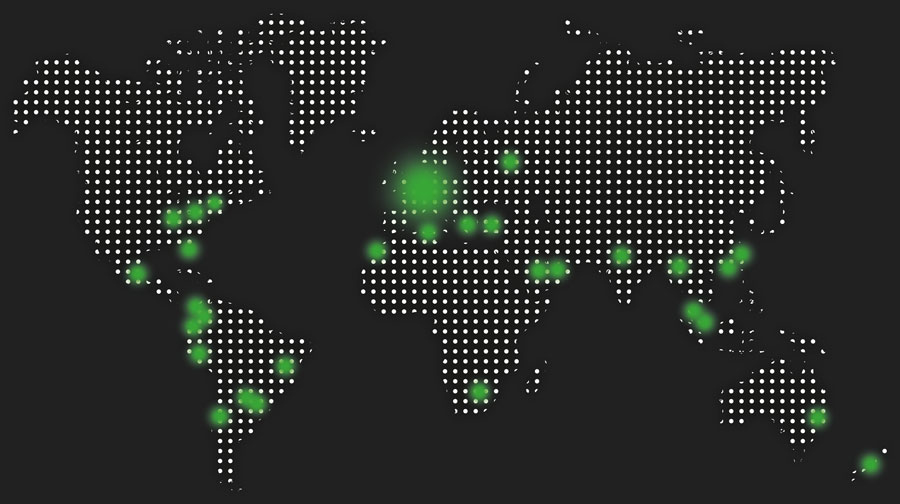
New trends in country risks: AU G-Grade Q4 2018
Who did not notice that the main worldwide stock exchanges have been shaken recently by political events:
- US protectionist measures against its economic partners: Europe, China, European Union, Mexico, Canada… creating uncertainties on global growth
- Brexit future affects financial projections; lack of agreement on the conditions of the UK’s exit from EU… maintaining the possibility of a Hard Brexit
- Budget proposals by Italy are rejected by the European commission… leading the country to revise its figures to avoid further difficulties.
Against this background, monitoring exposure to country risk remains an important factor for companies and the G-Grade is obviously a great tool to do so. In this quarter, our risk mitigation tool reveals the following variations:
Downgrades:
- (-1.25) Nicaragua: 3 insurers have decreased their ratings on the country. The ongoing political crisis led to chaos, demonstrations and riots and the consequent repression of the government has led to many deaths. Tourism industry is strongly decreasing, and a lot of people are leaving the country. GDP growth was +4.9% in 2017 and expected to be -4% in 2018 and -1% in 2019 according to IMF recent forecast.
- (-0.75) Argentina’s G-Grade was already falling in Q3 (from 6.5 to 7) and continues in Q4 (from 7 to 7.75). The liquidity situation remains the main concern, especially after the request of Mauricio Macri at the end of the summer to get an earlier payment of the IMF aid plan.
- (-0.50) Pakistan’s current account balance situation deteriorates quickly (-1.7% in 2016, -4.1% in 2017 and -5. 9% in 2018) and foreign reserves keep on continuously decreasing.
Upgrades:
Significant improvements this quarter are in the Balkans region:
- (+0,75) Croatia’s G-Grade improves from 5.25 to 4.5, as a result of good economic fundamentals especially driven by a dynamic tourism industry. IMF forecasts a growth of 2.8% in 2018 (in line with 2017).
- (+0,50) Serbia. Like its neighbour, the situation is improving, especially in terms of growth (+4% in 2018) and public finance: Government gross debt level was 76% of in 2015 and is expected at 56% in 2019 (according to IMF).
- Armenia (+0,50) and Slovakia (+0,50) benefit also from good GDP trends expected to reach +6% and 3.9% respectively in 2018.
Download the G-Grade Q4 2018 here

